
Basic shape of a roundabout (or traffic circle) originated in 1790s, when Architect/Engineer Pierre L'Enfant proposed circular intersections for Washington USA.
Europe, particularly UK, adopted traffic roundabouts and introduced then widely after 1905.
Dubai's first traffic roundabouts were planned in 1959.
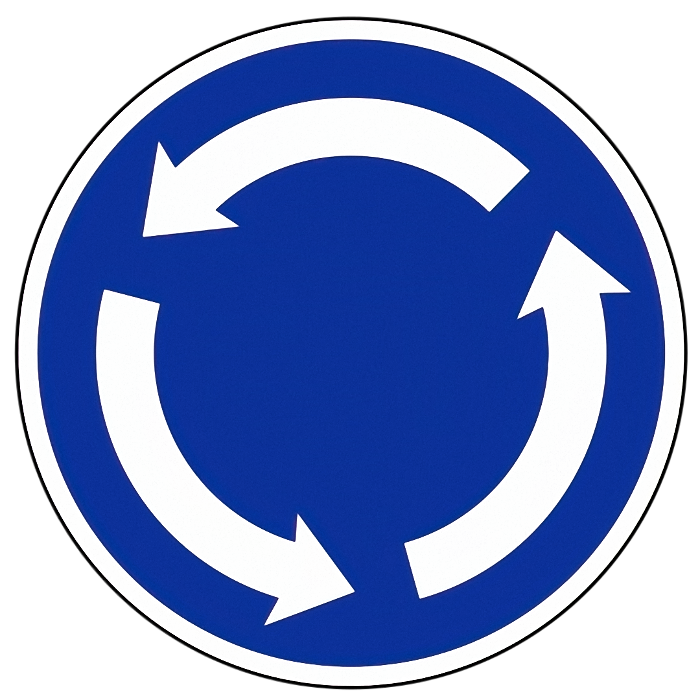
Traffic Roundabouts were extensively used in United Kingdom
John Harris (a UK Architect) introduced roundabouts to Dubai in his 1959 Town Plan
Roundabouts then became a feature of Dubai's Roads.
Traffic roundabouts had inherent problems with traffic flow
UK introduced a 1966 Law that vehicles entering a roundabout gave way to vehicles already negotiating the roundabout.
Nevertheless, negotiating a roundabout required:Alertness Courtesy Patience Willingness to give way to others An understanding of how Traffic Roundabouts worked These were qualities not all Dubai's Drivers possessed.
Falcon Roundabout formed the Junction of Al Mina Road, Bank Street (later know as Computer Street), Al Ghubaiba Road on Dubaiside.
Falcon Roundabout was built in mid 1970s
Dubai Municipality subsequently "beautified" the roundabout with an attractive garden area.
DM placed a large statue of a Falcon at the garden's center. Falcon’s head was turned as if looking over its shoulder.
Statue soon became known as the bird with the broken neck!
Over time, the roundabout became affectionately known as "Budgerigar Roundabout" alluding to the statue's similarity to a budgerigar.
The Falcon had plenty of feathered friends for company.
Falcon Roundabout was located next to Dubai Flour Mills' Grain Silos in Port Rashid.
These Silos attracted thousands of Dubai's pigeons as a source of easily accessible, inexhaustible food.
Eventually traffic lights replaced the Falcon Roundabout.
Falcon Statue relocated to Mirdiff Park for a quieter but lonelier life.
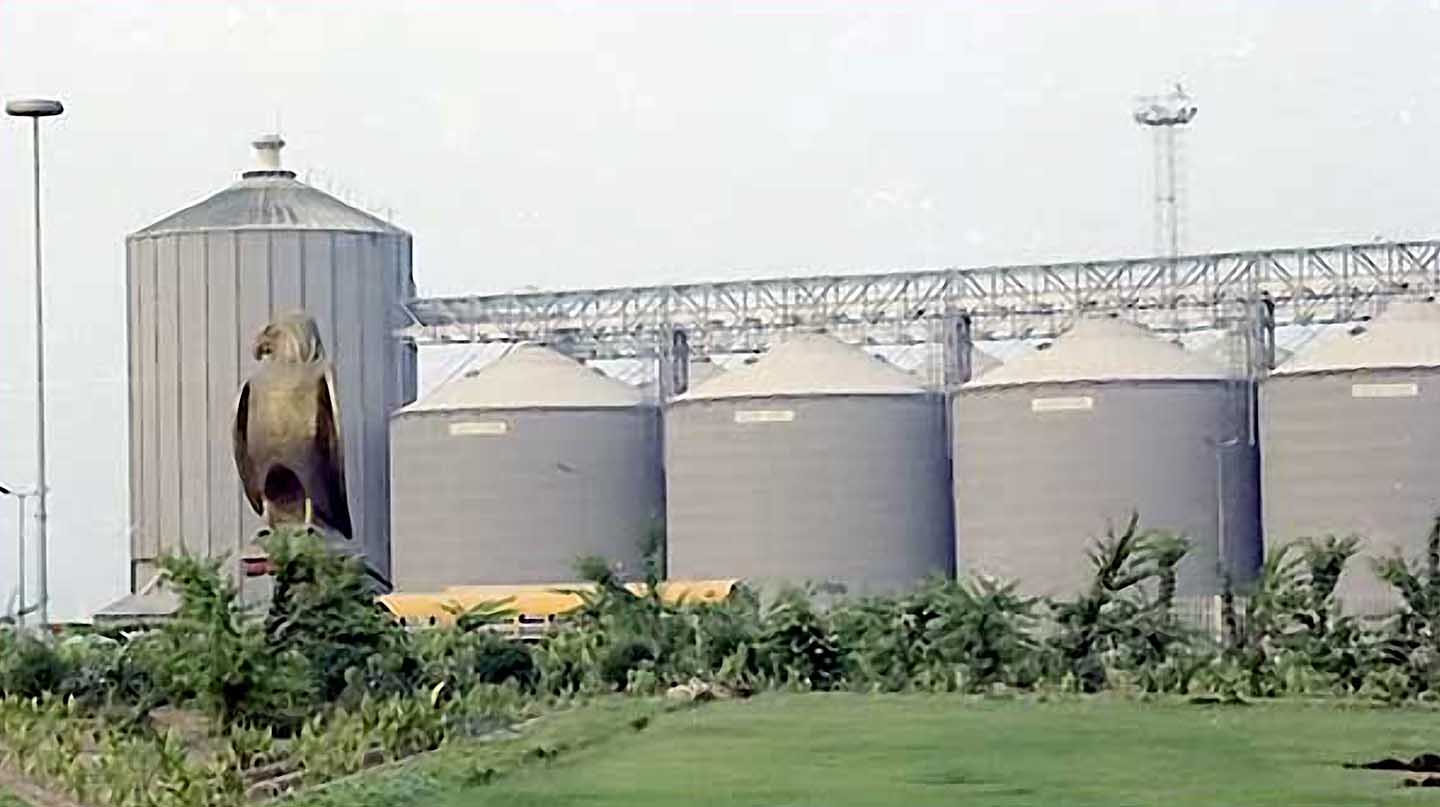
Falcon Roundabout
Known as "Budgie Roundabout" since statue resembled a Budgerigar
Al Dhiyafa Street was built in the early 1970s connecting Jumeirah Beach Road with Dubai World Trade Centre and the old Abu Dhabi Road.
The roundabout at Satwa controlled traffic on Al Dhiyafa Street, Al Mankhool Road and Al Satwa Road as it still does today. Rydges Plaza Hotel was well known landmark located on the roundabout. Despite Dubai's move to Traffic Light Controlled Road Intersections, Satwa Roundabout remains.
It seems an anomaly but the reason may be the Civil Defence Station located on the roundabout. Perhaps their Fire Engines needed quick and easy access to the road system.
His Highness Sheikh Mohammed bin Rashid Al Maktoum, Vice-President and Prime Minister of the UAE and Ruler of Dubai, renamed Al Dhiyafa Street in Bur Dubai as 2nd of December Street, marking celebrations of UAE's 40th National Day in 2011.
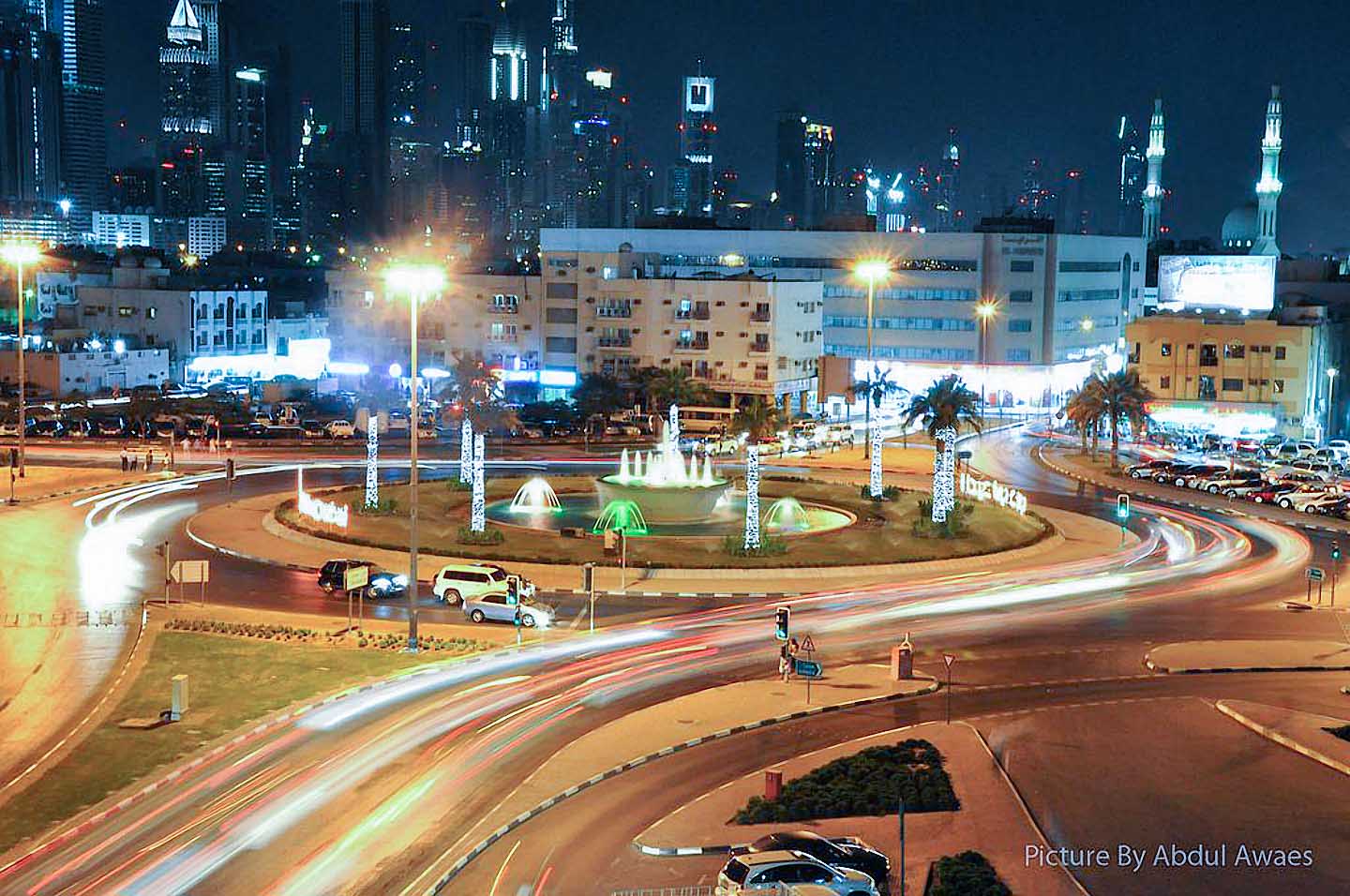
Flame Roundabout started life as the Fire Monument built in 1969. Its flame was lit by HH Sheikh Rashid bin Saeed Al Maktoum, then Ruler of Dubai, on October 13 1969 year to mark the start of Dubai's Oil Production.
In 1975 as part of the Airport Road and Sharjah Road upgrade the Flame Monument was relocated to a roundabout at the junction of Sharjah and Airport Roads.
Dubai's "new" Airport had not long opened. Flame Roundabout will have been the new Airport's arrivals' first glimpse of Dubai as it used to be. Its flame was "everlasting" but anyone driving around the Flame Roundabout had to look hard to spot the flame.
Eventually the Flame Roundabout inevitably became a traffic obstacle as Dubai's traffic volumes grew and relocated to a nearby traffic junction.
Original Defence Roundabout was a simple Traffic Roundabout linking Jumeirah with the old Abu Dhabi Road and also the (then) new Hatta Road.
This Roundabout was built in the early 1970s when Sheikh Rashid was forming his Army which he named Dubai Defence Force. He built Barracks for his new DDF on the Zabeel side of the old Abu Dhabi Road adjacent to the "new" roundabout that had been built.
This roundabout soon started to be referred to as "The Defence Force Roundabout", later abbreviated to "Defence Roundabout".
Sheikh Zayed Road No1 Interchange is still referred to as Defence Roundabout (or Defense Roundabout).
Until Sheikh Rashid's death on 7th October 1990, his Beach Palace was regularly used by him to entertain Foreign and local Dignatories. While he received his guests inside the Beach Palace, invariably guests would dine in the open air courtyard with food set out on trestle tables and guests sitting on plain wooden bench seats. The roundabout immediately in front of the Beach Palace provided easy road access to the Palace for those Dignatories.
Image shows UK's Queen Elizabeth 2 arriving at Sheikh Rashid Beach Palace during her State Visit in 1979.
After Sheikh Rashid's death, his Beach Palace became a Museum commemorating the founding of the UAE.
The roundabout was removed some time later.

Located near where the original Ramada Hotel used to be, this roundabout took its unofficial name from that hotel.
Original Ramada Hotel is no more. It was demolished 2017.
The Ramada Roundabout is gone, replaced by a traffic light controlled road junction.
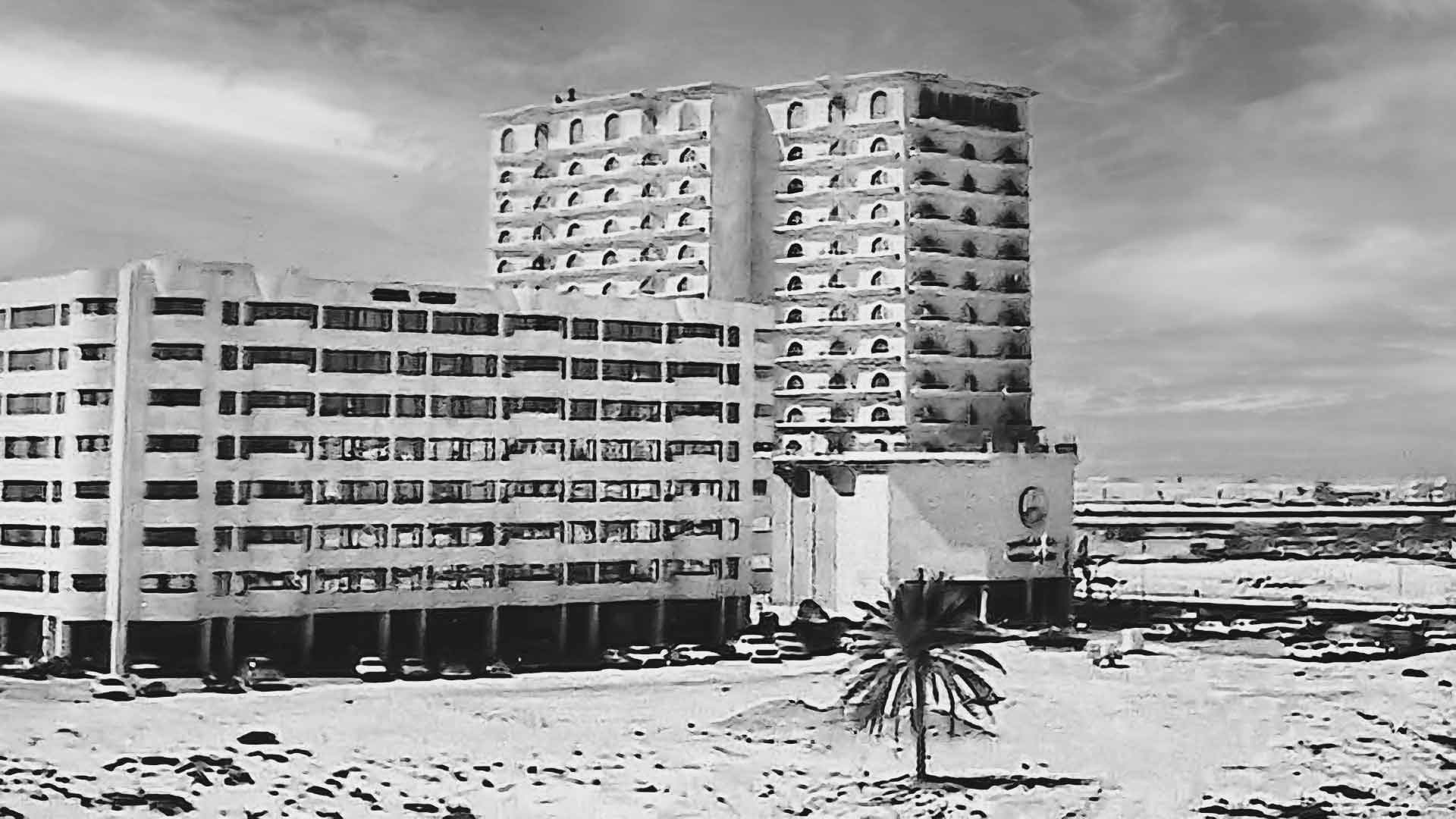
I regularly drove around the Trade Centre Roundabout on my way to work or Dubai Country Club.
I went on overseas leave for a month.
When I returned I drove home from Dubai Airport but instead of negotiating the familiar Trade Centre Roundabout, I found myself driving through a new shiny underpass.< br>A new Road had opened during my absence,
Coming out of the Underpass, my surroundings seemed unfamiliar.
Trade Center Roundabout was not the same!
I found my way home by following the signposts!!Len Chapman
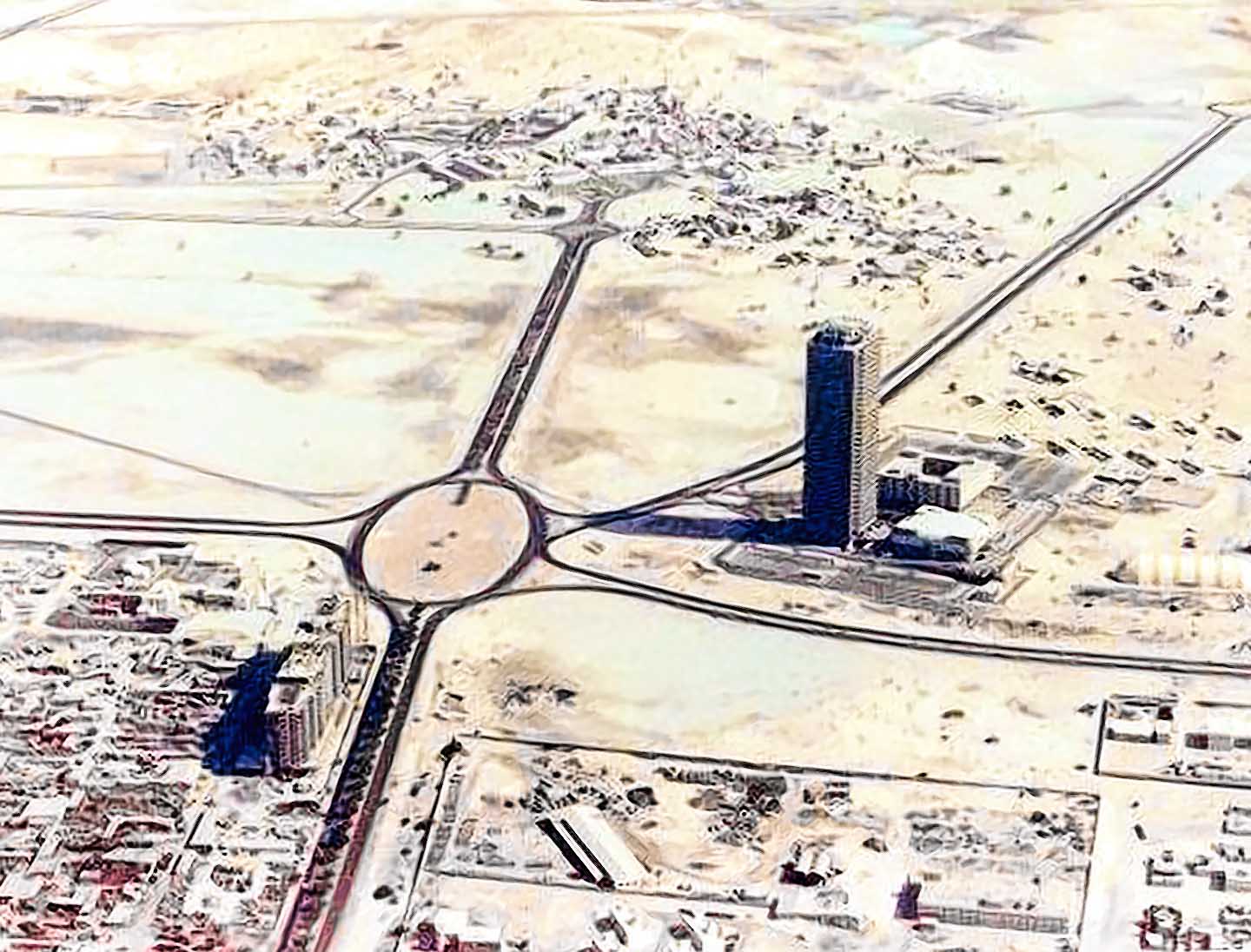
Dubai World Trade Centre Roundabout circa 1978
A Roundabout existed where the Fish Roundabout is now since early 1960s.
No indicated date as to when the Fish Sculpture was placed on this roundabout. Sculptor is identified as an Iranian Artist - Mr Mir Ismiali.
He apparently studied for a Doctorate in Architecture in France and produced sculptures for roundabouts in France.
There are no records or surviving examples of his work other than Dubai's Fish Roundabout.
Dubai's Clock Tower Roundabout had a distinct function when it first opened in 1963.
Then it was the first entry point to Dubai so visible to all Dubai's Visitors.
Clock Tower Roundabout linked the Airport Road, Al Maktoum Bridge and Al Maktoum Street which were then the main thoroughfares in Dubai.
While Dubai's Clock Tower no longer fulfils that role, it has achieved Icon Status as an internationally recognised symbol of Dubai.
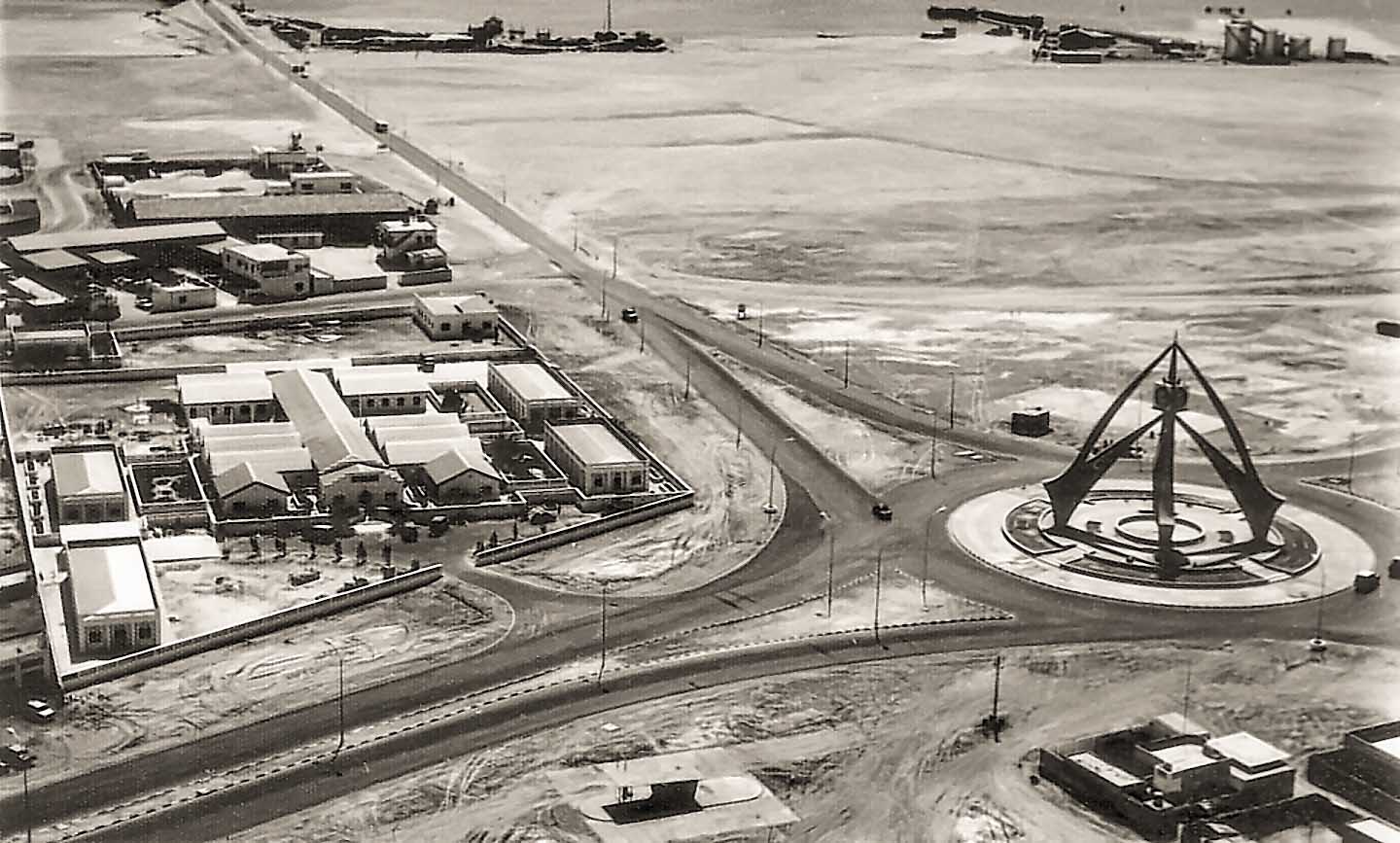
Now the Chelsea Plaza Hotel Dubai